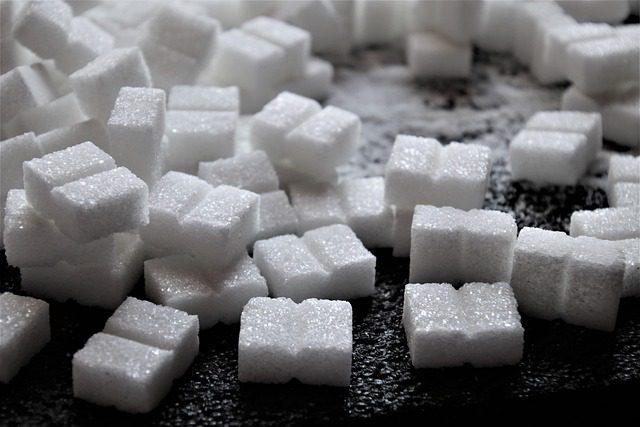Can You Use Monk Fruit Sweetener While on Keto?
If you’re on a keto diet, you know that crushing a sugar craving without wrecking your macros is a huge win. That’s where monk fruit sweetener comes in. It’s a natural, zero-calorie sugar alternative that can help you stay on track.
Also known as luo han guo, monk fruit has been used in Asia for hundreds of years, but it’s quickly becoming a go-to for health-conscious people in the West. In my years as a sports nutritionist, I’ve seen clients struggle with cutting sugar more than anything else. Finding the right tools is key to long-term success.
This guide will break down what monk fruit is, the real health benefits you can expect, and how to choose the right kind to support your keto lifestyle.
Related Article: What Happens When you Follow a Low Sugar Diet?
Disclaimer: This article is for informational purposes only and is not to be used to treat or diagnose any condition. It is recommended that you speak with your healthcare professional before adding anything new to your nutrition plan to ensure it will not interact with any condition you may have or medication you may be taking.
Table of contents
Key Takeaways
- Monk fruit is a zero-calorie, zero-carb sweetener that is 150-250 times sweeter than sugar, making it ideal for keto diets.
- Its sweetness comes from antioxidants called mogrosides, which do not raise blood sugar or insulin levels.
- The FDA recognizes monk fruit as “Generally Recognized as Safe” (GRAS), including for children and pregnant women.
- When buying monk fruit, always check the label for fillers like maltodextrin, which has a high glycemic index and can kick you out of ketosis. Look for blends with erythritol instead.

What Is Monk Fruit?
Monk fruit is a small, green gourd that grows on a vine in parts of Southeast Asia. Its power as a sweetener comes from unique antioxidants called mogrosides, primarily Mogroside V, which are intensely sweet but contain zero calories.
Unlike regular sugar, these compounds aren’t absorbed in your upper GI tract, so they don’t provide carbs or calories. This is why monk fruit is about 250 times sweeter than table sugar without affecting your blood glucose levels.
Because of this, it has a glycemic index of zero, making it an excellent choice for anyone managing blood sugar, especially those on a keto diet. The Food and Drug Administration (FDA) has designated it as “Generally Recognized As Safe” (GRAS), confirming it’s safe for everyone, including children and pregnant women.
Related Article: Is the Keto Diet the Right Plan for Elite Athletes?
Monk Fruit Health Benefits
Monk fruit isn’t just a healthy sugar substitute because of what it lacks (calories and carbs). The mogrosides that provide its sweetness also offer some impressive health perks.
1. Helps in Weight Loss
Since monk fruit sweeteners have zero calories, they are a fantastic tool for creating a calorie deficit. By replacing high-calorie sugar with monk fruit in your coffee, tea, or keto-friendly baked goods, you can significantly reduce your daily calorie intake, which is fundamental for weight loss.
2. Safe for Use by Diabetics
With a glycemic index of zero, monk fruit does not raise blood sugar levels or cause an insulin spike. This makes it an ideal sweetener for people with diabetes who need to manage their blood glucose carefully. The American Diabetes Association even recognizes it as a preferable sweetener option.
3. Has Anti-Inflammatory Properties
The mogrosides in monk fruit are powerful antioxidants that have been shown to have anti-inflammatory effects. These compounds can help fight free radicals in the body, which are unstable molecules that can cause cellular damage and contribute to chronic inflammation and disease.
4. May Have Anti-Cancer Properties
Some preliminary research suggests that mogrosides may have anti-cancer properties. For example, a 2016 study found that monk fruit extract could inhibit the growth of colorectal and throat cancer cells in a lab setting. It’s important to remember this research is still in its early stages, but the antioxidant effects of mogrosides are a promising area of study.
5. May Have Antibiotic Properties
With growing concerns over antibiotic resistance, researchers are looking everywhere for new solutions. Early studies suggest monk fruit extract has antibiotic properties and may even help fight candida, a common yeast that can cause infections.
Monk Fruit and Keto
So, can you use monk fruit sweetener on keto? The answer is a definitive yes. With zero carbs and zero calories, the pure extract is perfectly compatible with a ketogenic diet.
However, there’s a critical detail you must pay attention to. Because monk fruit extract is so concentrated, it’s often sold as a blend with other ingredients to make it measure more like sugar.
Pro Tip: Always Read the Label! Many monk fruit products contain fillers like maltodextrin or dextrose. These are essentially forms of sugar with high glycemic indexes that will spike your insulin and kick you out of ketosis. Always choose monk fruit sweeteners that are blended with keto-friendly options like erythritol or allulose, or use the pure liquid extract.
Popular keto-friendly brands like Lakanto, NOW Foods, and Health Garden typically use erythritol, which has a glycemic index of 1, making it a safe choice.
Monk Fruit vs. Stevia
Monk fruit and stevia are two of the most popular natural, zero-calorie sweeteners for keto dieters. While they share many similarities, the biggest difference comes down to taste and how they are used.
Many users on forums like Reddit note that stevia can sometimes have a slightly bitter or licorice-like aftertaste, while monk fruit has a cleaner, more sugar-like sweetness. Here is a quick breakdown of how they compare to other common sweeteners:
| Sweetener | Glycemic Index | Net Carbs | Taste Profile |
|---|---|---|---|
| Monk Fruit | 0 | 0g | Clean, fruity sweetness with little to no aftertaste. |
| Stevia | 0 | 0g | Very sweet, can have a slightly bitter or licorice-like aftertaste for some. |
| Erythritol | 1 | 0g | About 70% as sweet as sugar, can have a mild “cooling” sensation on the tongue. |
| Table Sugar | 65 | 100g per 100g | The classic sweet taste. Spikes blood sugar. |
Ultimately, the choice between monk fruit and stevia is a matter of personal preference. Both are excellent keto-friendly options.
FAQs
Does monk fruit have an aftertaste?
Most people find that monk fruit has a very mild, clean aftertaste compared to other sweeteners like stevia. However, taste is subjective. Blends that use erythritol can sometimes have a slight “cooling” sensation, which can be minimized by dissolving the sweetener in liquid or fat ingredients.
Can I bake with monk fruit sweetener?
Yes, monk fruit is heat-stable and great for baking. For the best results, use a 1:1 blend with erythritol, like those from Lakanto. This helps provide the bulk and texture needed in recipes. Pure monk fruit extract is highly concentrated and won’t work as a direct substitute for sugar volume-wise.
Is monk fruit safe for children and pregnant women?
Yes. The FDA has given monk fruit a “Generally Recognized as Safe” (GRAS) designation, making it safe for all populations, including children, and pregnant or nursing women.
How much monk fruit sweetener should I use?
It depends on the product. If you are using a 1:1 blend (like Lakanto Classic), you can swap it cup-for-cup with sugar. If you are using a pure liquid or powdered extract, you will need much less. A few drops or a tiny scoop is often enough to sweeten a drink. Always check the product’s packaging for specific conversion recommendations.


*Disclosure: This article may contain affiliate links or ads, which means we earn a small commission at no extra cost to you if you make a purchase through these links. These commissions help support the operation and maintenance of our website, allowing us to continue producing free valuable content. Your support is genuinely appreciated, whether you choose to use our links or not. Thank you for being a part of our community and enjoying our content.
PLEASE CONSIDER SHARING THIS ON YOUR SOCIAL MEDIA TO HELP OTHERS LEARN MORE ABOUT THIS TOPIC.





